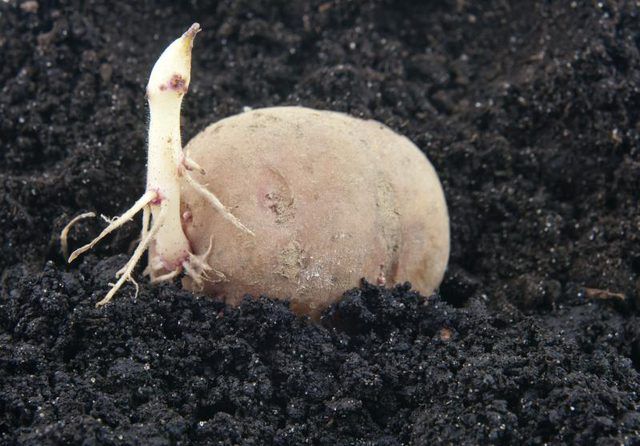Bulbs
Flower Basics
Flower Beds & Specialty Gardens
Flower Garden
Garden Furniture
Garden Gnomes
Garden Seeds
Garden Sheds
Garden Statues
Garden Tools & Supplies
Gardening Basics
Green & Organic
Groundcovers & Vines
Growing Annuals
Growing Basil
Growing Beans
Growing Berries
Growing Blueberries
Growing Cactus
Growing Corn
Growing Cotton
Growing Edibles
Growing Flowers
Growing Garlic
Growing Grapes
Growing Grass
Growing Herbs
Growing Jasmine
Growing Mint
Growing Mushrooms
Orchids
Growing Peanuts
Growing Perennials
Growing Plants
Growing Rosemary
Growing Roses
Growing Strawberries
Growing Sunflowers
Growing Thyme
Growing Tomatoes
Growing Tulips
Growing Vegetables
Herb Basics
Herb Garden
Indoor Growing
Landscaping Basics
Landscaping Patios
Landscaping Plants
Landscaping Shrubs
Landscaping Trees
Landscaping Walks & Pathways
Lawn Basics
Lawn Maintenance
Lawn Mowers
Lawn Ornaments
Lawn Planting
Lawn Tools
Outdoor Growing
Overall Landscape Planning
Pests, Weeds & Problems
Plant Basics
Rock Garden
Rose Garden
Shrubs
Soil
Specialty Gardens
Trees
Vegetable Garden
Yard Maintenance
How to Grow Recycled Potatoes Indoors
How to Grow Recycled Potatoes Indoors. Potatoes (Solanum tuberosum) may begin to sprout or turn green if they're kept around for a while, especially if you've stored them in a dark place. It's not safe to eat the sprouts or the green tubers, but you can try recycling them to grow a crop of potatoes. Unless you're recycling organically grown...

Potatoes (Solanum tuberosum) may begin to sprout or turn green if they're kept around for a while, especially if you've stored them in a dark place. It's not safe to eat the sprouts or the green tubers, but you can try recycling them to grow a crop of potatoes. Unless you're recycling organically grown potatoes, most grocery-store potatoes are treated with sprout-inhibiting chemicals that might result in suboptimal growth when compared to seed potatoes raised especially for gardening. Although any potato variety will work, those with small tubers such as "French Fingerling" work well in containers.
Potato Preparation
Potatoes that are still firm but beginning to sprout from the eyes give the best results. Eyes are the indentations where new growth occurs. If potatoes are mushy or have rotted areas, throw them away. Wash the potatoes to remove any soil or litter. Using a clean, sharp knife that's been dipped in rubbing alcohol, cut larger potatoes into smaller pieces, each containing at least one eye. You can leave egg-sized potatoes whole. To heal the fresh cuts, put potato pieces on a clean surface in a well-ventilated, dark place until the cut surfaces are dry and firm.
Container and Soil
Potato plants need a lot of root room to develop new tubers. Choose a pot that's 10 to 12 inches wide or larger and is about 24 inches deep. Containers should have multiple drainage holes. Wash pots in soapy water, rinse them in clear water and soak them in a solution of 1 part of household bleach to 9 parts water for at least five minutes. Rinse pots thoroughly with clean water. Rather than using garden soil, choose a quality indoor potting mix that contains perlite or vermiculite.
Planting and Spacing
New potatoes form on the growing potato stems. To give a maximum amount of potato-forming buried stem, start with only 6 inches of soil in the container. Space the potatoes or potato pieces, eye side up, 6 inches apart and 3 inches under the soil, keeping them 6 inches away from the sides of the container. Water the newly planted potatoes until water comes out of the drainage holes. When potato shoots reach 6 inches tall, add soil to cover the stem bases, leaving about 3 inches uncovered. Add more soil with each new 3 inches of stem growth, stopping when the surface is within 2 inches of the container top.
Water and Light
Once growth starts and potatoes are well-rooted, plants can grow quickly. Keep them well-watered without making the soil soggy, watering plants once or twice a week. You can allow the top 2 inches of soil to become dry. Plants need at least six hours of sunlight per day, so place them by a sunny window and rotate the pot 1/4 turn weekly. If enough natural light isn't available, provide supplementary artificial light.
Other Considerations
Potatoes need a fertilizer that isn't high in nitrogen such as an organic vegetable fertilizer. Too much nitrogen encourages vegetative growth rather than tuber formation. Make organic fertilizer by combining 1 part bone meal, 4 parts soybean meal and 1/2 parts each of dolomitic lime, agricultural lime and kelp meal. Mix a couple of handfuls, or about 1/2 cup, into the soil before planting potatoes, and add one handful or 1/4 cup each time you add soil to the container. After that, add about a handful of fertilizer each month. Mix the fertilizer into the soil. Stop fertilizing when potatoes are forming flower buds. Potatoes usually grow as an annual crop in U.S. Department of Agriculture plant hardiness zones 3 through 9, with variation depending on variety. Potato plants shouldn't be exposed to freezing temperatures.